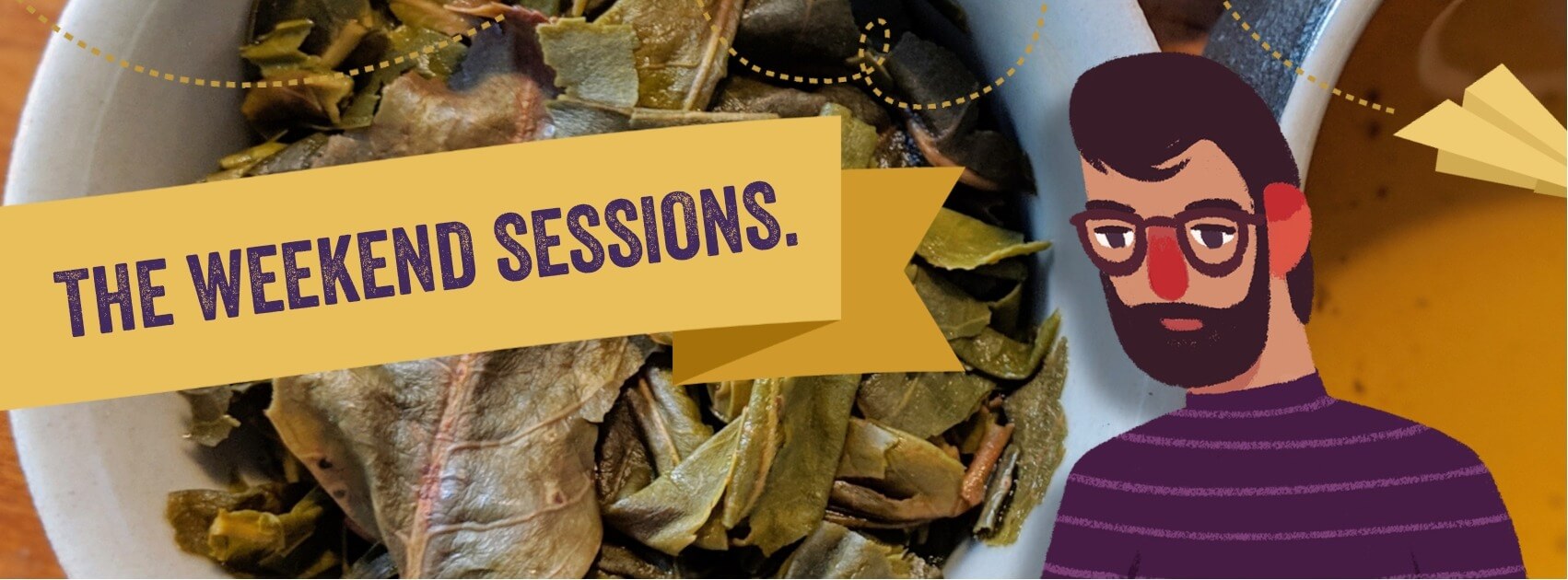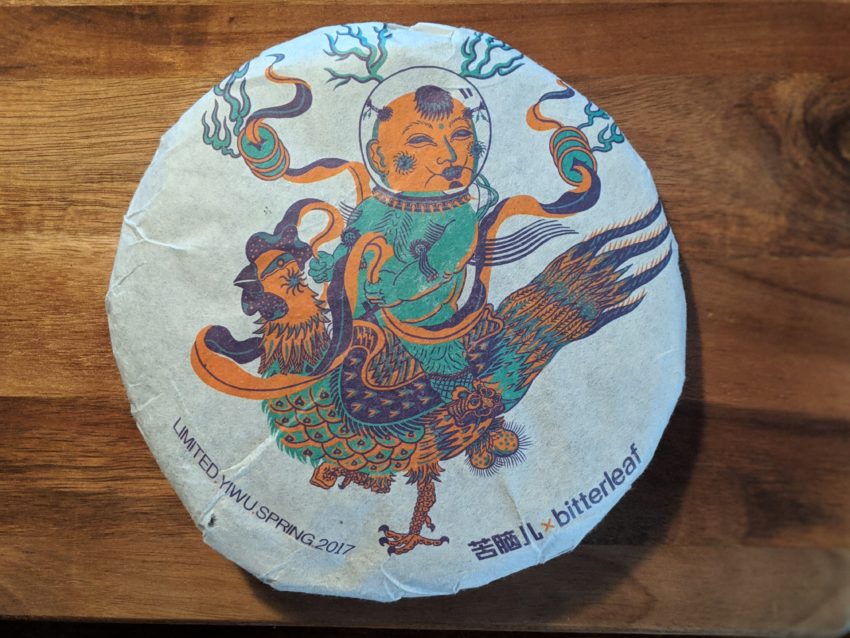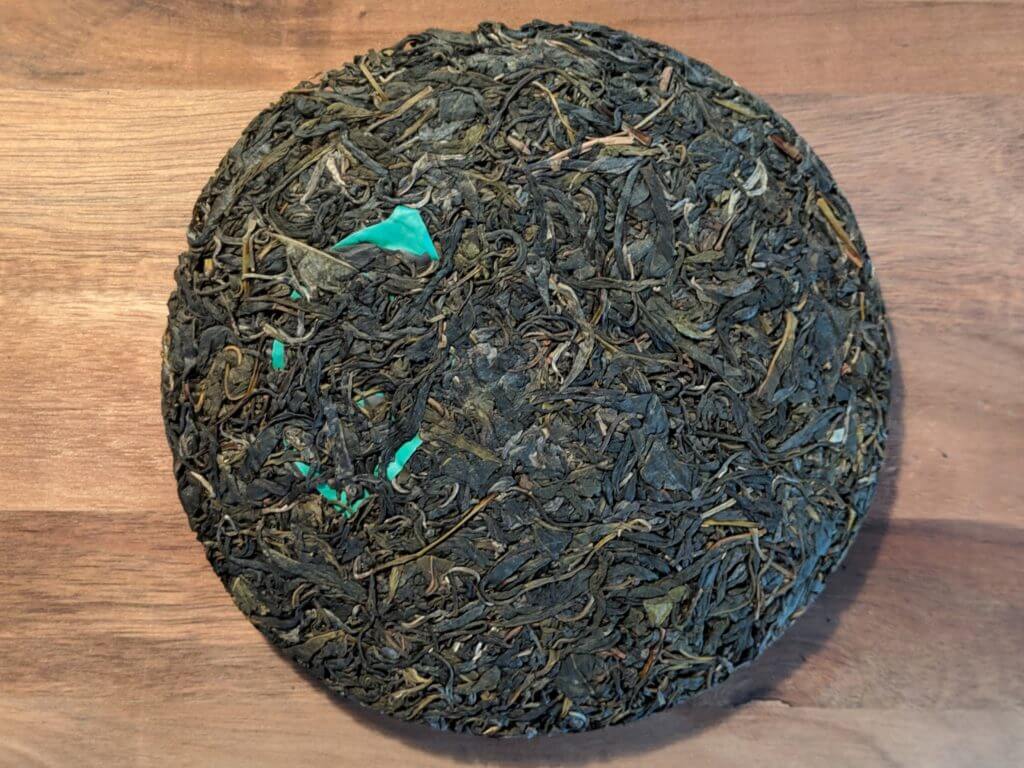
Bitterleaf Teas Year of the Rooster is the 2017 offering of their yearly “Year of the ___” cake. These puers are made from a Yiwu material that comes from a “left to grow” garden, which means more or less what it sounds like. For the last ten years these tea trees are harvested only once a year, don’t get sprayed with any weed killers, pesticides or synthetic fertilizers, and are left to grow without pruning. Bitterleaf says that all this creates a higher quality and more flavourful tea. I can’t comment on that, as I’ve never done a direct comparison, but I do like the idea of a more natural growing process.
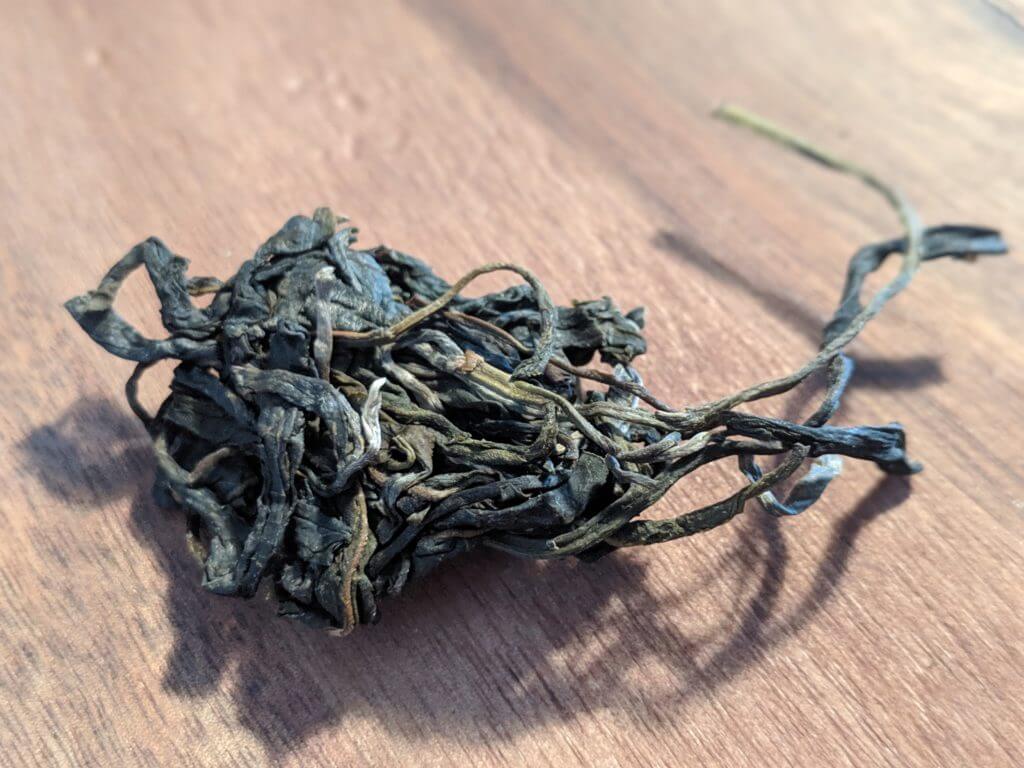
Breaking the cake
The cake has a medium compression and the dry leaves don’t have much of a fragrance. Slight notes of sweet fruit and dry earth, but you really need to get in and smell it. After a quick rinse, the wet leaves come to life and have a pretty rich aroma. It smells fairly sweet with a tartness in the background and a fruitiness that reminds me of dark cherries.
For this session I am using 4 grams of tea in my 55ml gaiwan, water at 90 °C and infusions starting at five seconds that increase by five each time.
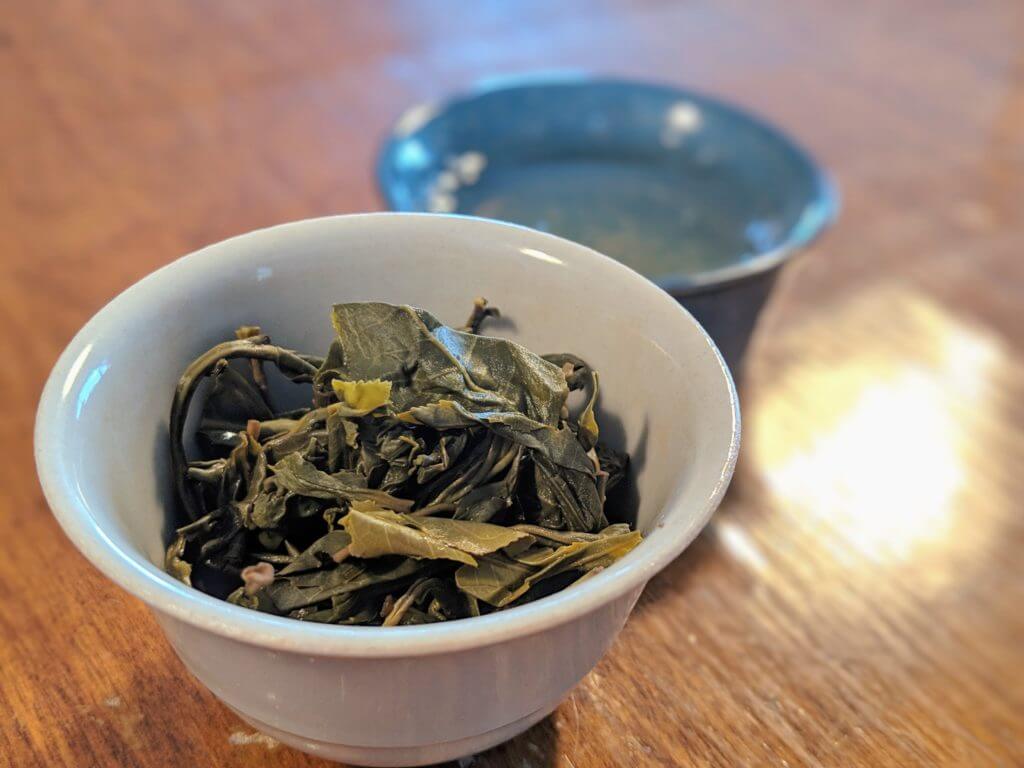
Infusions 1-4
The tea is smooth, sweet and pleasant. The taste is predominantly sweet, darker fruits – apricot, over-ripe dark cherries and soft bruised apples. The mouthfeel is thin, but still manages to stick with you for a surprisingly long aftertaste. The aftertaste is a brown sugar sweetness that hangs on with no astringency or bitterness.
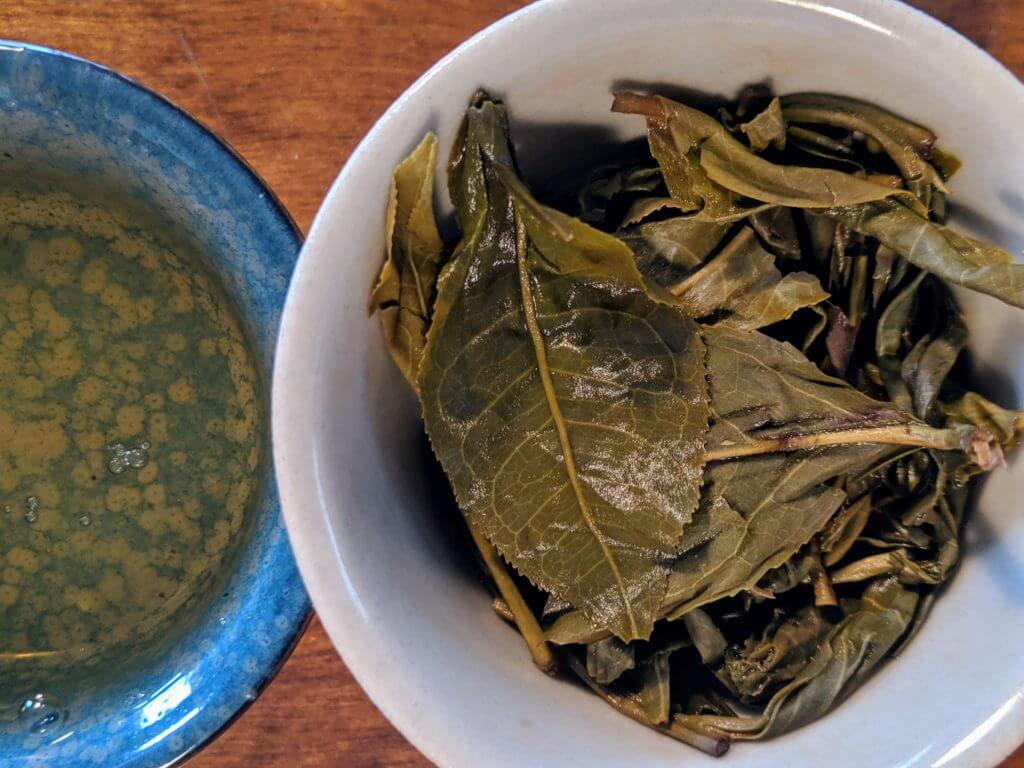
Infusions 5-8
In terms of taste, this tea doesn’t seem to be changing or evolving through the session. This tea knows what it is and it’s not wavering. The same goes for the texture of the tea, it remains on the thinner side that leaves a light oily coating on your tongue and down your throat. The only real change I can comment on is the aftertaste, which has gone from sweet and soft to nicely astringent and tangy.

Infusions 9-13+
After the last bunch of infusions have stayed more or less the same I was expecting the trend to continue and I was mostly right. I get the occasional hint of a clove-like spice and a bit of damp wood, but for the most part this tea has remained the same all throughout this session. The tea has lots of life in it though, I got through thirteen good infusions before it dropped off followed by a few more long ones. I called it quits at the seventeenth, but your milage may vary depending on how far you like to push your teas.
Final thoughts
My recommendation for this tea depends on what you like and what you value. If you like a tea that takes you on an adventure, that takes twists and turns every sip, then you can take a pass on this cake. If you want a simpler, easy drinking, smooth tea then this is probably going to be right up your alley. My only real thing to note is that this cake is a larger 357 gram beeng as opposed to most of the other cakes that Bitterleaf sells which are 200 grams, so if you’re on the fence about it then maybe try a sample out before diving in.
Personally, I think this tea is the golden standard of a “daily drinker” tea. I find that term gets tossed around lots and is frequently used to simply mean a cheaper tea, but that’s not what it means to me. Cost is definitely a part of it but a daily drinker is also about the taste and overall feel. This tea really does taste fantastic but it’s not distracting. It’s something you don’t need to dedicate 100% of your attention to in order to get the most out of it, you can mindlessly be sipping on it while working and not feel like you’re doing yourself a disservice. You can also over steep it and not end up having to toss your cup because it’s harsh and bitter. I haven’t tried it yet, but I feel like this tea would do well grandpa style. Not every tea needs to take you on an intense trip – sometimes you want something steady and predictable. On those days, this is the tea that I’ll be reaching for.
